The automotive world is rapidly embracing electrification, yet fully electric vehicles aren’t the only path to a greener drive. Hybrid vehicles, which combine gasoline engines with electric motors, offer a compelling alternative, especially for city dwellers without easy access to charging stations. These gas-electric marvels, constantly refined since the debut of the Toyota Prius and Honda Insight decades ago, are now delivering impressive fuel savings and reduced emissions without the need to plug in.
If you’re looking to dip your toes into vehicle electrification without committing to a fully electric car, a hybrid small SUV is an excellent choice. These versatile vehicles offer the practicality of an SUV with the enhanced fuel efficiency of a hybrid powertrain. Let’s explore some of the best options in the market, focusing on the all-new and updated models for 2025.
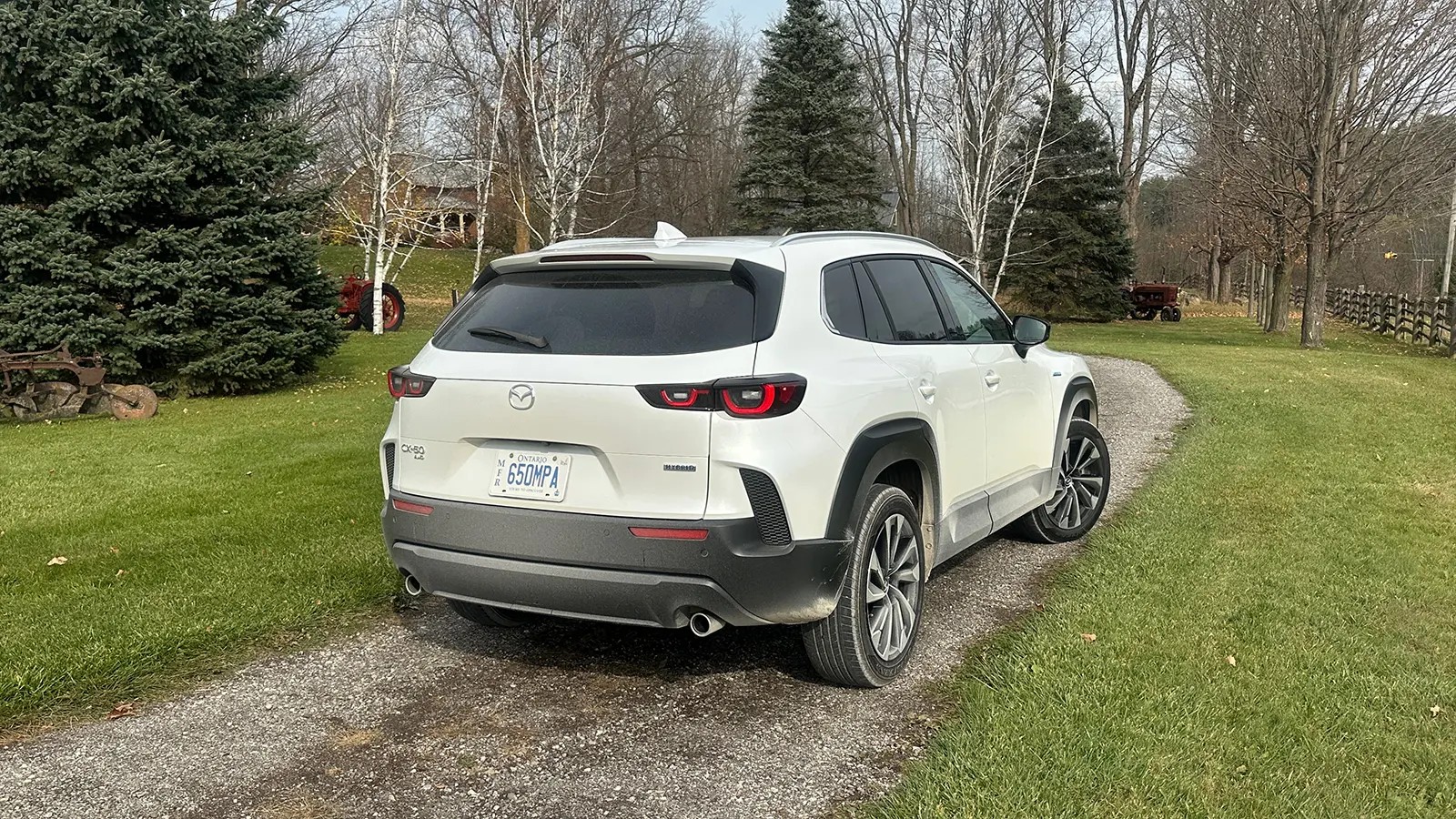 white Mazda CX-50
white Mazda CX-50
Mazda CX-50 Hybrid: Blending Rugged Style with Toyota Efficiency
The Mazda CX-50, already known for its rugged aesthetics, takes a significant leap forward with the introduction of the 2025 CX-50 Hybrid. This all-new variant marries Mazda’s distinctive design with Toyota’s renowned hybrid technology. Underneath its adventurous skin, the CX-50 Hybrid borrows the powertrain from the Toyota RAV4 Hybrid, delivering a familiar blend of performance and efficiency.
Expect the same 219 horsepower and 163 lb-ft of torque from the 2.5-liter inline-four engine, seamlessly paired with a continuously variable transmission (CVT), three electric motors, and standard electric all-wheel drive. While this powertrain configuration prioritizes fuel economy over outright performance, it still provides ample power for daily driving. Compared to the standard gasoline CX-50, the Hybrid variant offers more horsepower but less torque, and significantly less of both compared to the turbocharged CX-50 models, emphasizing its focus on efficiency rather than Mazda’s signature “zoom-zoom” driving experience. Unlike the Hyundai Tucson Hybrid, which boasts a sporty N-Line version, the CX-50 Hybrid leans towards refined efficiency.
Fuel economy is a key highlight, with the CX-50 Hybrid achieving an EPA-estimated 38 mpg combined. This figure is just a slight step down from the RAV4 Hybrid’s 39 mpg, showcasing the successful integration of Toyota’s hybrid system into the Mazda platform.
Mazda’s engineers invested considerable effort in adapting the Toyota Hybrid System (THS) to the CX-50. Beyond the subtle “Hybrid” badging, styling enhancements include extended body cladding and a slightly taller roofline to maintain a 7.6-inch ground clearance, even with the battery pack nestled beneath the rear seats. While the CX-50 Hybrid is longer than many competitors, its cargo space is slightly reduced compared to other CX-50 models, offering 29.2 cubic feet versus the standard 31.4 cubic feet. It also falls behind the RAV4 Hybrid and Tucson Hybrid in cargo capacity, both boasting 38.7 cubic feet.
The CX-50 Hybrid truly distinguishes itself with its interior refinement. Mazda has crafted a subtly upscale cabin, particularly in higher trim levels, laden with premium features. Stepping into the Premium Plus trim, the tester was immediately impressed by the two-tone leather seats featuring camel-colored stitching that echoes throughout the black accent stripes, doors, and dashboard.
A rotary controller in the center console, a feature commonly found in luxury vehicles, minimizes fingerprints on the touchscreen. Convenient buttons near the steering column provide access to memory seat settings, a camera for navigating tight spaces, and parking sensor deactivation for car washes.
While the expansive panoramic sunroof available on most CX-50 Hybrid trims is a welcome feature, the interior retains a touch of classic Mazda. Analog gauges, limited LED accent lighting, and a relatively small, mostly monochromatic infotainment screen (excluding wireless CarPlay or Android Auto) lend an old-school charm.
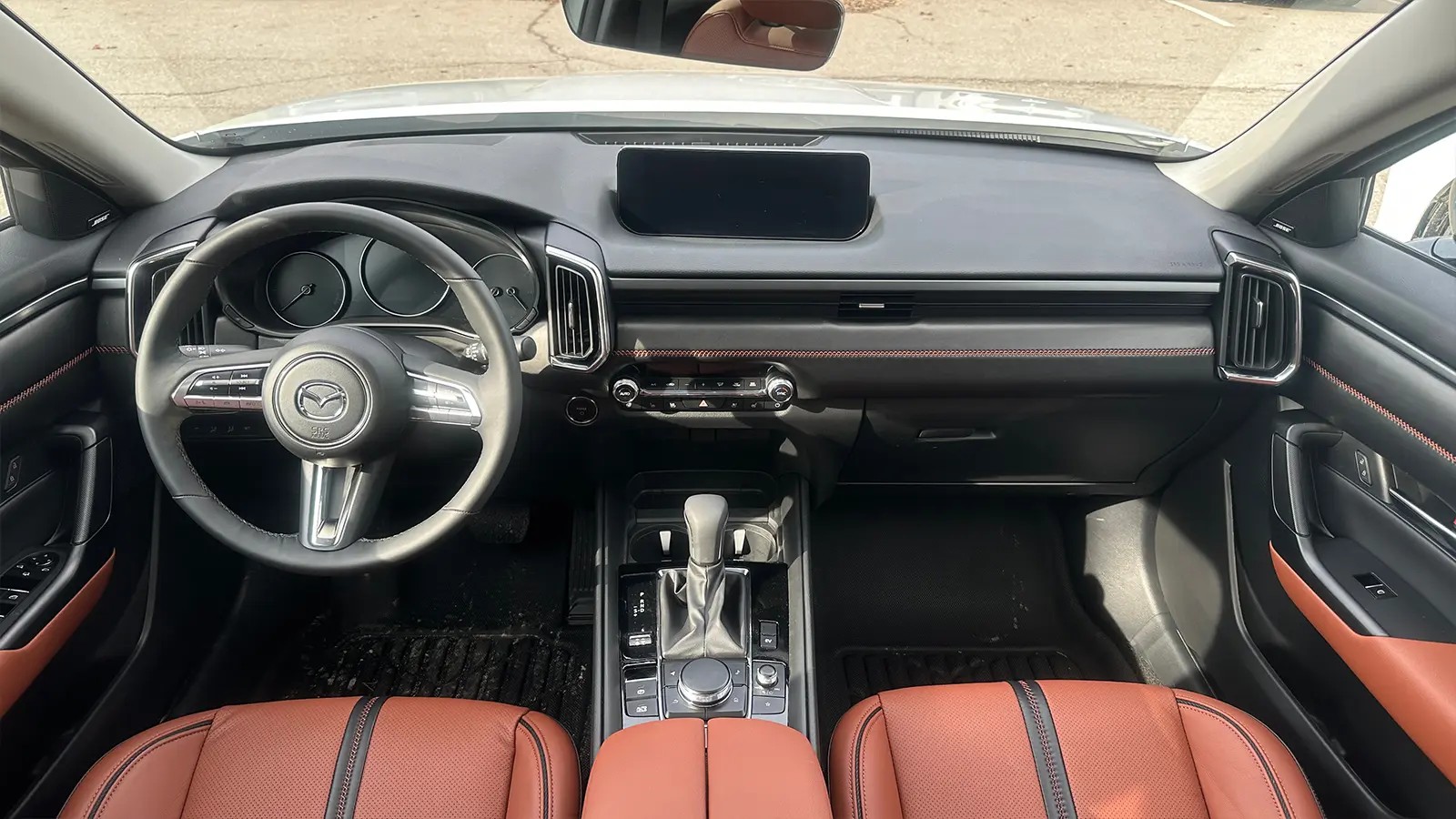 Mazda CX-50 front interior
Mazda CX-50 front interior
The CX-50 Hybrid delivers a near-luxury experience with a blend of physical buttons and touchscreen controls. The ride quality and cabin quietness are noticeably more refined than many Toyota hybrids. Overall, the CX-50 Hybrid presents a more sophisticated and fuel-conscious personality than previous Mazdas, foregoing sporty paddle shifters and turbo engines found in other CX-50 variants.
Priced between $34,000 and just over $40,000, the CX-50 Hybrid positions itself above gasoline-only versions but below the more powerful Turbo models. It occupies a mid-range spot in the lineup, contrasting with the Hyundai Tucson, which offers a broader spectrum of gas-electric hybrid options at similar price points.
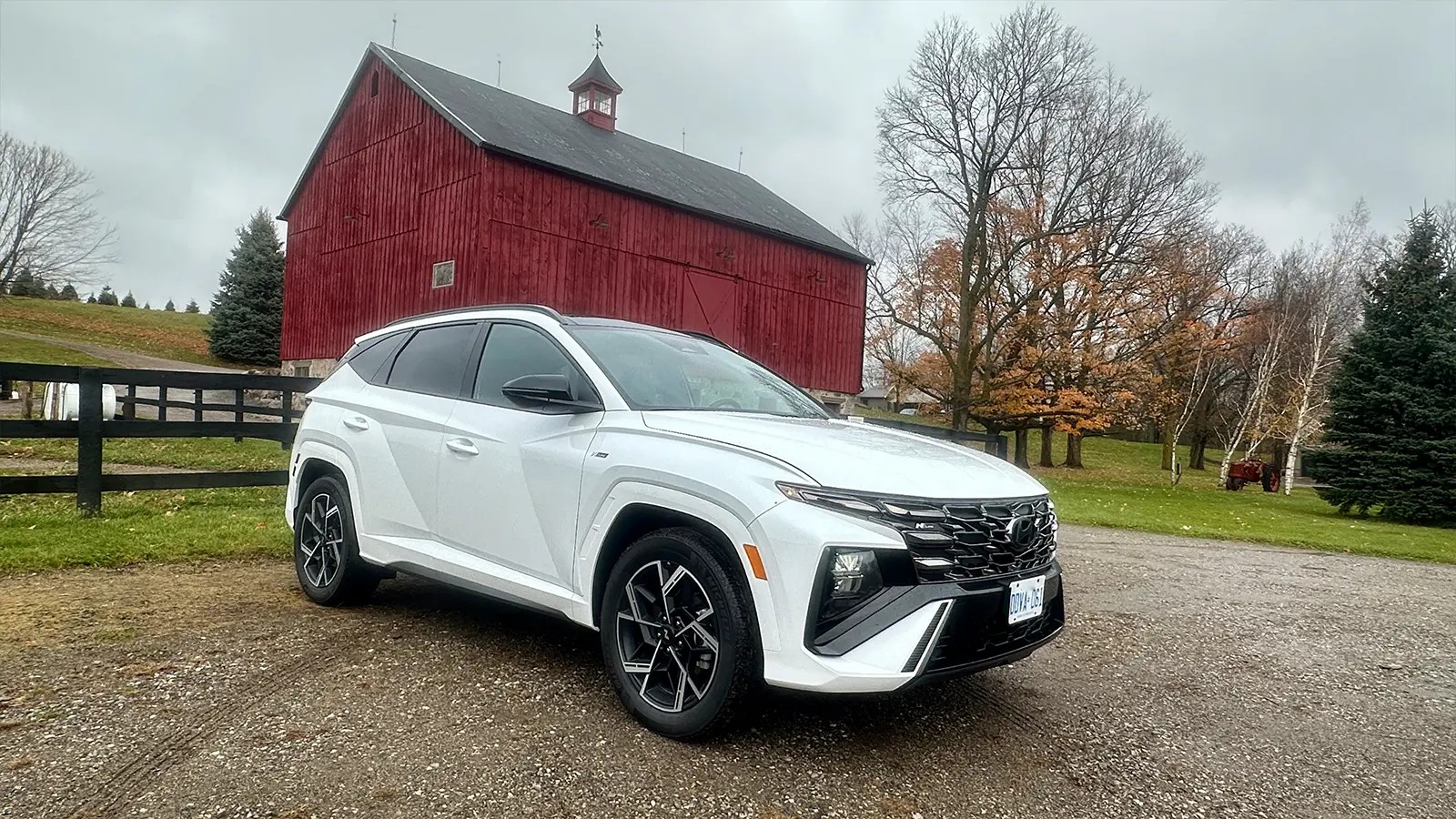 White Hyundai Tucson Hybrid
White Hyundai Tucson Hybrid
Hyundai Tucson Hybrid: A Versatile Hybrid Small SUV for Every Taste
Hyundai adopts a more comprehensive approach with its popular Tucson model. The 2025 Hyundai Tucson Hybrid lineup offers a diverse range, including fuel-efficient, sporty, and luxurious hybrid trims, alongside a plug-in hybrid variant. The Tucson Plug-in Hybrid (PHEV) is ideal for those prioritizing electric driving, offering 33 miles of all-electric range for daily commutes while retaining the flexibility of a gasoline engine for longer journeys.
The Tucson Hybrid N Line model tested showcases the sporty side of the Tucson Hybrid family. Distinguishable by its N Line badging, unique 19-inch wheels, black mirror caps, and dual exhaust tips, the N Line exudes a more dynamic presence. All 2025 Tucson models benefit from a refreshed front fascia with updated LED lighting and new wheel designs, further enhancing its sharp and modern styling, a departure from the more rounded aesthetics of some competitors.
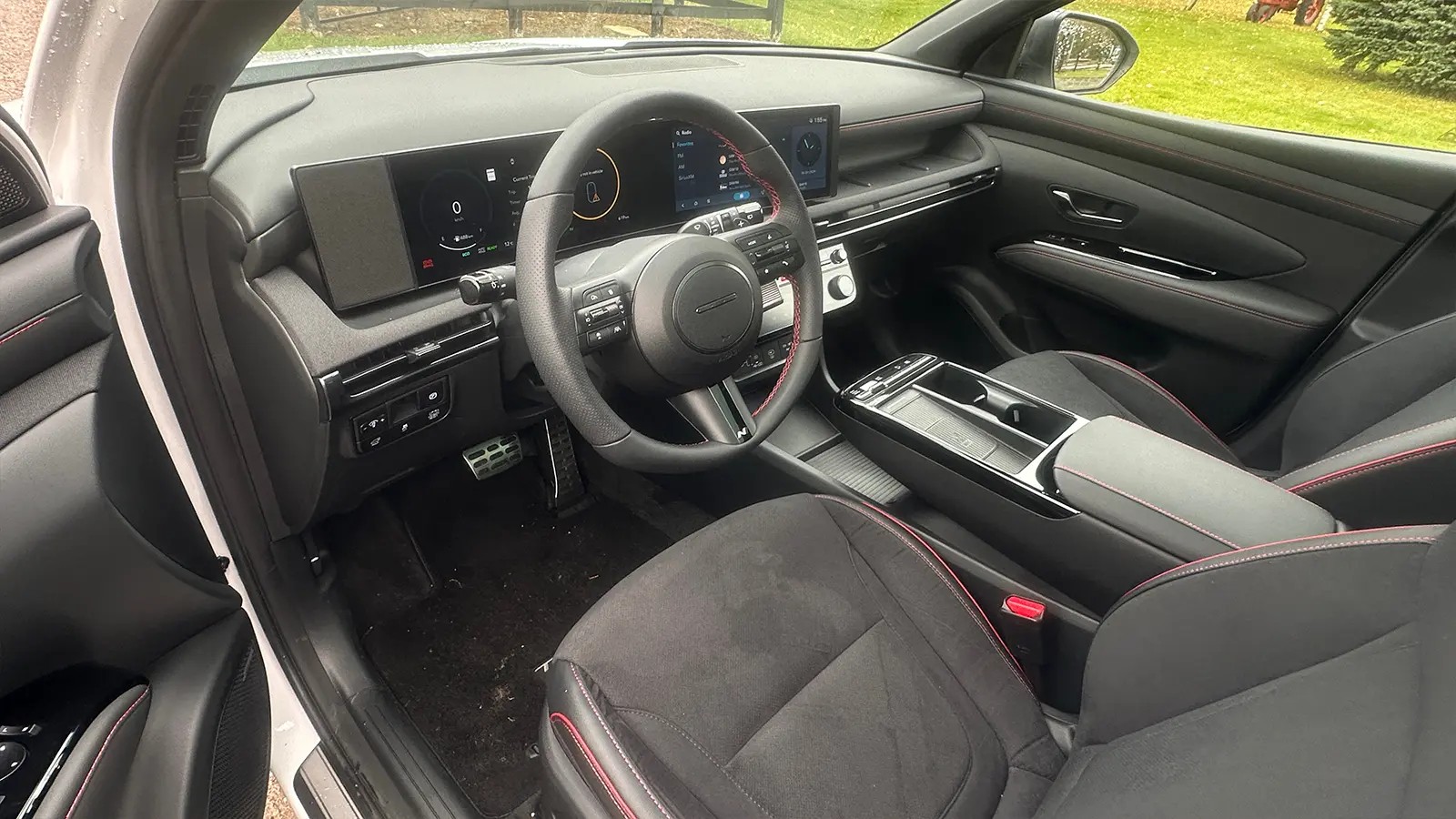 Hyundai Tucson Hybrid front interior
Hyundai Tucson Hybrid front interior
Inside, the Tucson Hybrid N Line presents a contemporary, all-digital twin-screen display, replacing traditional gauges. Red stitching accents on the supportive seats, door panels, center armrest, and steering wheel, along with sporty pedals and an N-branded steering wheel, clearly signal its performance intentions.
The sporty appearance is backed by a responsive 1.6-liter turbocharged engine, delivering a combined 231 horsepower and a robust 258 lb-ft of torque when using premium fuel (though regular fuel is also compatible). Paddle shifters provide manual control over the six-speed automatic transmission, offering a more engaging driving experience compared to the CVTs found in the Mazda and Lexus.
While not the most fuel-efficient hybrid small SUV in its class, the Tucson Hybrid N Line achieves a respectable 35 mpg combined. This slight dip in fuel economy is compensated by significantly enhanced driving enjoyment and a greater sense of power, especially when accelerating onto highways. The powertrain also exhibits a more refined character than the Mazda and, surprisingly, even the Lexus.
Despite its sporty N Line designation, the ride and handling of this Tucson Hybrid are surprisingly similar to the 2025 Tucson XRT, a new soft-roading trim available across the Hyundai lineup. Interestingly, even with its sporty cues, the Hybrid N Line includes “Baby Mode,” a driver-selectable feature that softens initial acceleration for passenger comfort, particularly useful for families with young children or passengers prone to motion sickness.
The Tucson Hybrid also excels in practicality, offering more rear-seat legroom and cargo space than the Mazda CX-50 Hybrid. It surpasses the subcompact Lexus UX in interior space across the board.
The Hyundai Tucson Hybrid N Line emerges as the well-rounded choice, blending sporty appeal with family-friendly practicality and ample space.
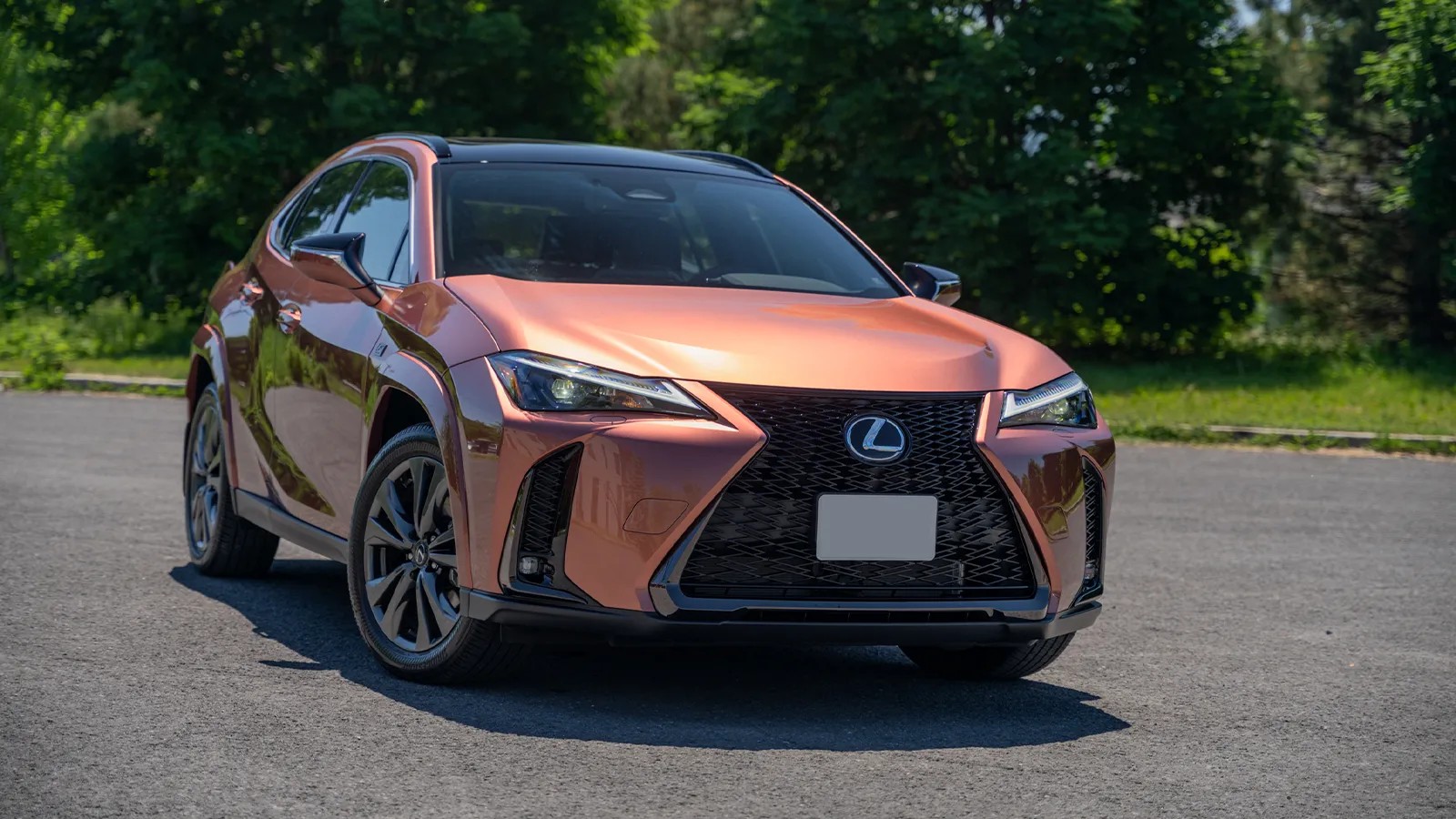 orange Lexus UX300h
orange Lexus UX300h
Lexus UX300h: Compact Luxury with a Focus on Value
The updated Lexus UX300h presents a different proposition in the hybrid small SUV segment. While it offers luxury appointments, it feels noticeably smaller, less powerful, and surprisingly less refined than its mainstream competitors. For 2025, the UX300h name replaces the previous UX250h designation, accompanied by subtle yet meaningful updates. Both front-wheel and all-wheel drive configurations remain available.
However, the Lexus UX300h’s classification as a true SUV is debatable. Fueleconomy.gov categorizes it as a compact car, while the Mazda and Hyundai are classified as Small SUVs with 4WD. The UX300h arguably aligns more closely with a subcompact crossover or hatchback in terms of dimensions. While driver space is comparable to its competitors, the UX300h appears significantly smaller when parked alongside the Tucson and CX-50. Despite not being direct rivals in terms of size, their overlapping price points make them viable options for cross-shopping.
The Lexus UX300h’s smaller footprint can be advantageous for urban dwellers, offering enhanced maneuverability and parking ease. Its styling, particularly in the higher-spec F Sport trim, is undeniably attractive, featuring unique wheels, grille design, a black roof, and dark roof rails. However, the oversized Lexus grille on a compact body might not appeal to all tastes.
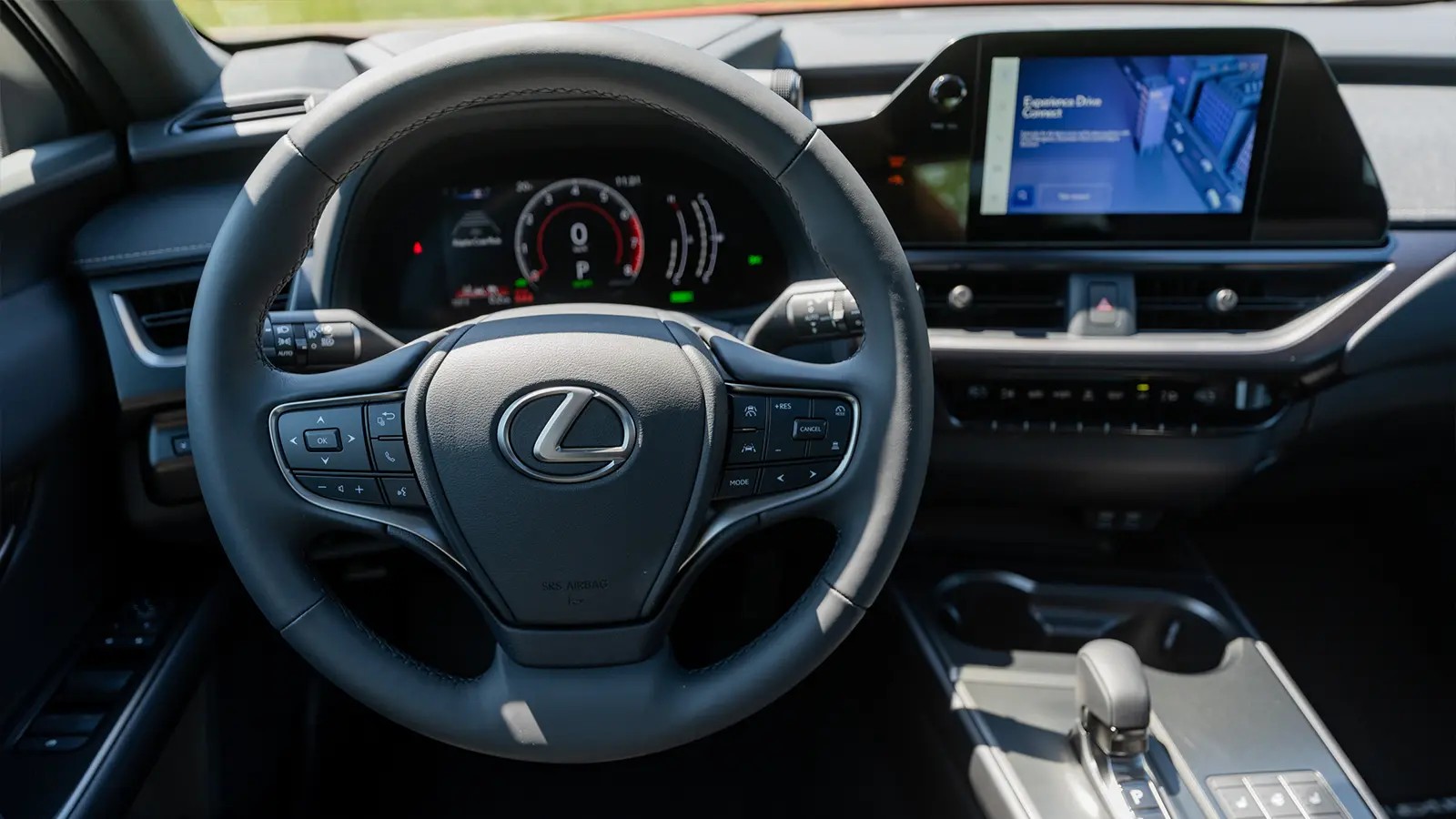 front interior of Lexus UX300h Hybrid
front interior of Lexus UX300h Hybrid
The UX300h’s interior excels in material quality, design, driver comfort, and infotainment, especially for drivers under six feet tall, where spaciousness is on par with competitors. However, rear-seat passenger and cargo space suffer due to its smaller dimensions. The cargo area offers a mere 17.2 cubic feet of storage, less than half the capacity of the Tucson.
The UX300h’s gauges retain a more traditional analog feel, although a color head-up display is available, a feature not found in the Mazda or Hyundai. A larger 12.3-inch infotainment screen, standard on all but base models, modernizes the interior, yet the abundance of physical buttons hints at a design from a pre-dominantly digital era, which some drivers might find reassuringly familiar.
Significant powertrain updates include a shift-by-wire CVT in this fifth-generation hybrid system. The UX300h also marks the first Lexus to adopt a lithium-ion traction battery, unlike the nickel-metal hydride batteries used in the Mazda and most Toyota hybrids.
Power output has increased to 196 horsepower, and fuel economy remains impressive, with all-wheel drive models achieving 42 mpg combined, closely matching the front-wheel drive model’s 43 mpg. However, the engine’s noise and harshness, uncharacteristic of Lexus vehicles, remain a notable drawback, perhaps amplified by the larger battery which allows for longer periods of quieter electric driving.
The Lexus UX300h’s primary strength lies in its value proposition. With a starting MSRP of $37,515 for the front-drive model and $43,035 for the F Sport AWD version, it offers a relatively affordable entry point into the luxury hybrid small SUV segment. While you compromise on interior space, you gain upscale materials and Lexus design at a competitive price.
Choosing the Best Hybrid Small SUV: The Verdict
Each of these hybrid crossovers presents a unique blend of strengths and weaknesses. However, the Hyundai Tucson Hybrid stands out as the most compelling overall package among these three.
The Tucson Hybrid masterfully balances practicality, sporty driving dynamics, and contemporary styling, both inside and out. Its well-rounded nature ensures it will remain stylish and relevant for years to come, making it a strong contender in a market increasingly dominated by electric vehicles. For those seeking the Best Hybrid Small Suv, the Hyundai Tucson Hybrid offers an exceptional combination of features, performance, and value.
*All mileage claims are EPA estimated.